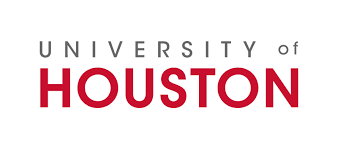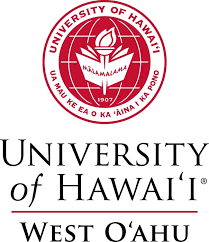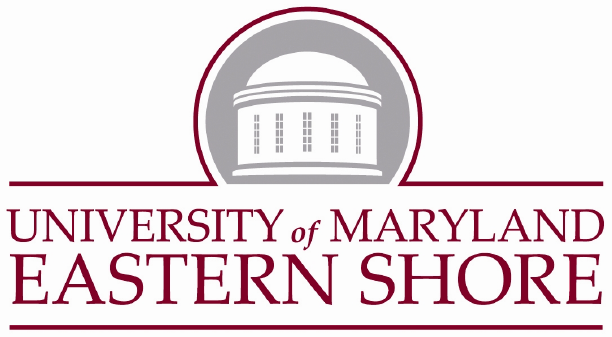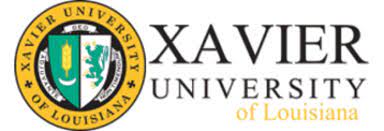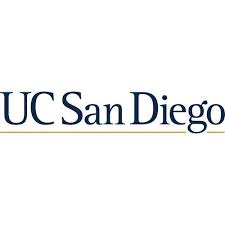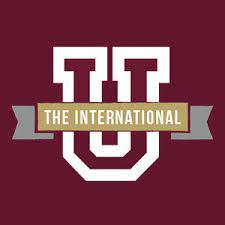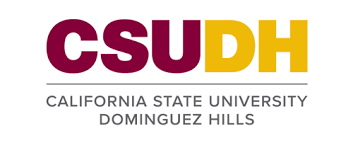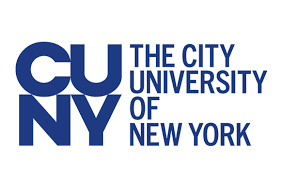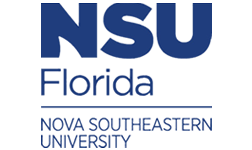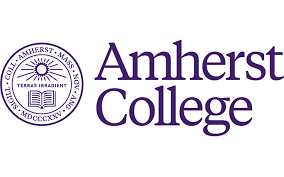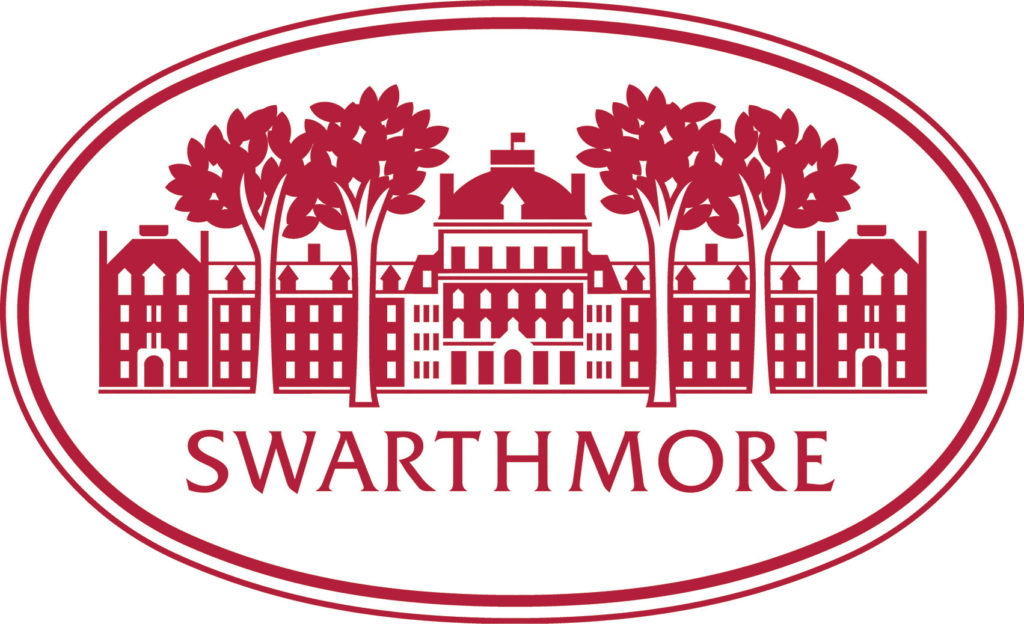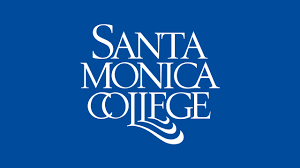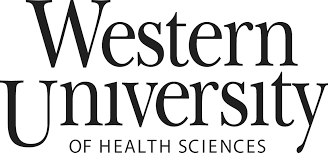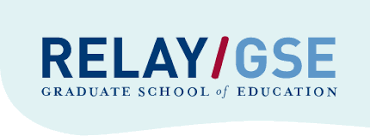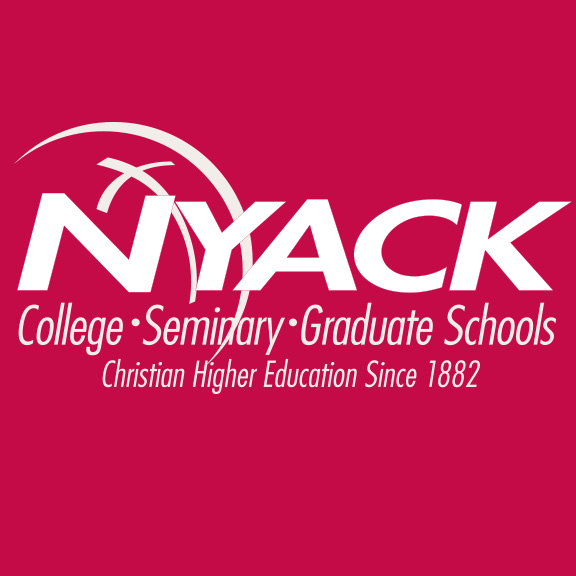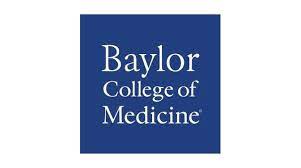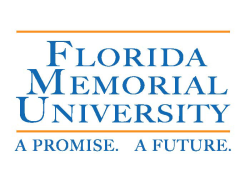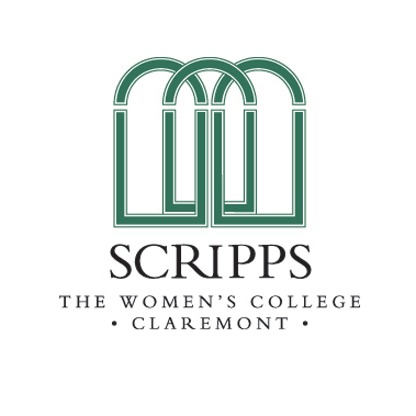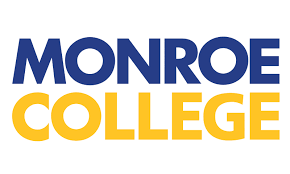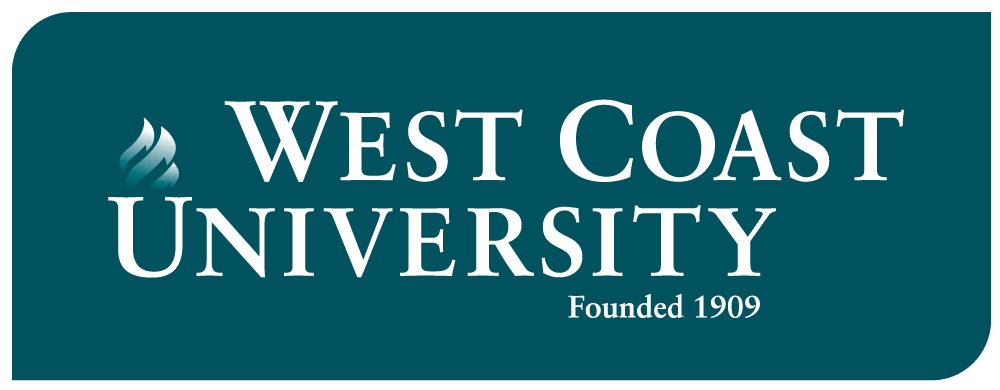Find Your Perfect School
In the past 20 years, there has been an increase in the racial and ethnic diversity among college and university faculty in the United States. But there are still challenges that plague the higher education industry where diversity and inclusivity issues are concerned, from faculty invalidations to systemic concerns.
The National Center for Education Statistics data point to 75% of full-time faculty (Fall 2018) were white. While Asians and Pacific Islanders comprised 12%, other ethnic groups, including blacks and Hispanics, were single digits. There are also reports that faculty diversity isn’t keeping up with student diversity in post-secondary institutions.
But let’s focus on the good news! There are 30 amazing colleges whose diverse faculty contributes to the positive development of their institutions, students, and community! These are among the best choices for students looking for more diversity in colleges because there is strength in diversity (to paraphrase Maya Angelou).
What’s diversity in the first place? Diversity is a broad term, and it concerns the ethnic and racial identity, gender/gender identity, and national origin identity, among other forms of social identity. It may also cover religion, age, economic background, political ideology, and learning style.
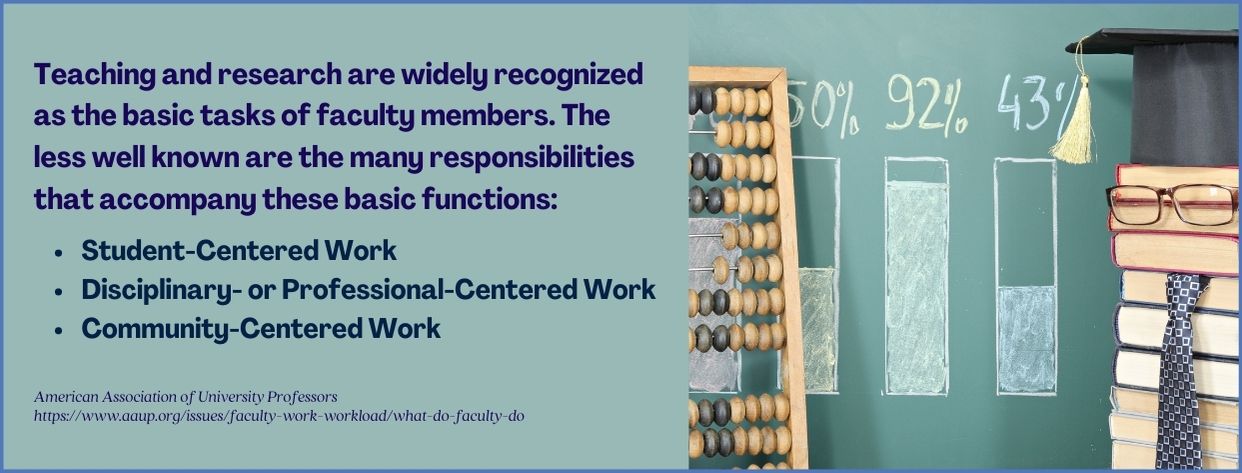
Emphasis must be made that higher education institutions focus more on structural diversity, meaning the ratio between people of different ethnic origins and races and men and women. This is because structural diversity becomes the foundation upon which other social identities, such as age and political ideology, can be brought to the table.
Dynamic structural diversity in an institution also means that a “critical mass” of professionals with diverse political, social, and cultural backgrounds strengthens diversity policies.
Why does diversity in faculty matter for the students and institutions? Students have abundant opportunities to gain knowledge and skills for the workplace and transferable skills for life!
With a diverse faculty, students learn to become more sensitive to the social, cultural, and political differences with race, ethnic, and gender identities. In a world where intolerance can be pervasive and destructive, tolerance in the classroom and campus can spread into the community.
Diversity also improves the students’ academic performance and technical and transferable skills! Students learn effective ways of communicating with others, including their professors and fellow students, sometimes in new ways. In doing so, students also develop their problem-solving and critical thinking skills.
With better students come better institutions! After all, colleges and universities are next to nothing without their faculty and students. Thus, their overall development through diversity, among other aspects, will contribute to their advancement in academic excellence, institutional longevity, and financial stability.
With that being said, many of the schools featured here as having the most diverse faculty in are based on the Chronicle of Higher Education’s 2020-2021 Almanac. Keep in mind that most, if not all, of these four-year colleges and universities have diversity and inclusivity departments but may approach these issues differently.
Amazing Colleges with the Most Diverse Faculty
University of Houston
Houston, Texas
Ranked among the best universities, U of H has a Nobel Peace Prize laureate and National Medal of Science recipient Paul Chu on its faculty roster. However, the University of Houston System’s flagship institution has experienced issues with the recruitment and retention of a skilled workforce. There’s also the issue of the faculty composition which ideally should be a reflection of the nation’s diversity.
Fortunately, U of H has found an effective solution: use a data-driven approach to ensure more faculty diversity in the recruitment and retention process. The results have been promising, increasing by 46% over five years in the number of underrepresented minorities in tenure-track and tenured faculty, and this was also true in the 20.3% increase in female faculty members in social and behavioral science and STEM disciplines.
Other notable changes for the 2014-2019 period in the tenured/tenure track are:
- Increase by 117% among female African-American faculty
- Increase by 44% among female Hispanic faculty
- Increase by 27% among male Hispanic faculty
The university’s success isn’t surprising because Houston itself is among the country’s most diverse cities, and thus, it’s easier to recruit and retain a more diverse faculty due to the diverse population. But U of H has unique programs to ensure faculty diversity among its ranks!
In 2014, the university opened the Center for ADVANCING UH Faculty Success with a National Science Foundation grant. The center’s aim: To provide meaningful assistance to universities in increasing the number of female faculty members in the STEM fields. The Center has made great strides, and its work is even more critical in light of the student body’s diversity.
These successes are due to several best practices in diversity, such as encouraging a proactive approach in recruitment and retention. There are also the dual career approach, the mid-career workshops, and the support from the Underrepresented Women of Color Coalition.
University of Hawaii-West Oahu
Kapolei, Hawaii
UHWO may be the newest member of the University of Hawaii System, but it’s among the country’s fastest-growing public four-year universities, aside from providing access to college services in Leeward Oʻahu. More importantly, its faculty and student diversity are among the best in the nation! Such recognition is a testament to UHWO’s institutional values, including its commitment to finding and hiring the most diverse teachers and scholars into its campus ohana – that’s family in Hawaiian.
There are several ways that faculty diversity is an institutional value at the UH System. First, there’s the Search Advocates Program, where the search for faculty and staff members is equitable. The recruitment and retention of the best possible employees are ingrained into the system.
Second, the WeLEAD initiative is a mentorship program designed to recruit and retain women academic leaders in the university. New hires are paired with the current women leaders and, thus, encourage a community founded on encouragement and shared vision.
A Western Association of Schools & Colleges (WASC)-accredited school, UHWO was founded as a comprehensive university offering bachelor’s degrees. The university philosophy is based on the liberal arts and serves career, professional, and applied fields and the state and regional educational needs.
Faculty members are well-prepared in addressing UHWO’s thrust in three areas – teaching, service, and research. Their work is based on curricula designed with a balance of social sciences, humanities, and career training. These three aspects are seen as complementary, not contradictory.
Such a broad range of services means that its faculty must be as diverse in composition as possible. Regarding race-related diversity, UHWO has more than 44% white faculty and 22.7% Asian, 8% Native Hawaiian/Pacific Islander, and 8% Black. Regardless of background, faculty members are committed to providing quality education to students and assisting them in their professional goals.
Charles R. Drew University of Medicine & Science
Willowbrook, California
The Charles R. Drew University of Medicine & Science proudly commits to a culture of diversity. In 1966, it welcomed underrepresented minorities and provided medical access to people in the underserved Watts region.
Diversity emphasizes the university’s policy and practices, from its educational programs designed to empower citizens to its faculty-led research on various health issues. The university also believes in diversity as vital in upholding educational quality and social justice that, in turn, fosters a positive, respectful and productive community. With diversity comes the fullest potential among its students, faculty, staff, and the larger community.
Beyond diversity, the community also practices inclusivity with all individuals treated with respect, fairness, and equality. Individuals are assured of equal access to resources and opportunities with the expectation of making meaningful contributions to the university’s vision and values.
These aren’t just empty words either! The university is recognized as a Historically Black Graduate Institution (Under Title III Part B) by the US Department of Education. It’s also a distinguished charter member of the Hispanic-Serving Health Professions Schools and, thus, has a wide range of programs designed to promote the health and well-being of Hispanic people.
The numbers related to faculty diversity also speak for themselves! Over 40% of its full-time faculty are African-Americans, a significant edge over the 6% national average. More than 5.5% are Hispanics, and it’s still higher than the 4% national average. There are also more Asians in the faculty roster at 27% versus the 9% national average.
As for the male-to-female ratio, CDU has a more balanced figure with 123 females and 141 males in its faculty (2013). While more needs to be done in this area, it can be safely said that CDU is committed to gender equality, too.
The impressive faculty diversity is matched by the student diversity, too. Of the total student population, more than 67% belong to minority groups. Female students comprise 65% of the student body, too.
Chicago State University
Chicago, Illinois
CSU’s diversity is a well-established fact with its large black student body, faculty, and staff members. Founded in 1867, it started as the Cook County Normal School, became the Chicago Teachers College, and finally, the Chicago State University in 1967. Today, it’s accredited by the Higher Learning Commission and a Thurgood Marshall College Fund member.
Diversity has always been a core value at CSC, and it’s among the most welcoming four-year institutions for people of various ethnicities, races, and cultures. With equal access to higher education being a thorny issue even in the 21st century, CSU’s diversity in both its faculty and student bodies is valuable.
The Office of Human Resources is among CSU’s offices that promote faculty diversity through policies and programs for employee development, diversity, and professionalism. With CSU’s commitment to strategic leadership underlined by the values of excellence, integrity, and collaboration, faculty retention is also high.
The Office of Latino Affairs also has a hand in promoting faculty diversity through student diversity. Here, students are provided with meaningful support for a smooth transition into campus and academic life. Latino and Hispanic faculty members who can identify with students and their life experiences are on hand for this purpose.
As for faculty composition in terms of ethnicity or race, African-American or black teachers comprise 42.3% of the 192 full-time tenured instructional faculty. White faculty members comprised 25.3% of the faculty, while 7.7% are Asians and 3.9% are Hispanic.
CSU is also a Predominantly Black Institution (PBI), meaning that it receives federal grants in line with its programs that increase access to higher education for low- and middle-income Black Americans. The Diverse Scholar in Education program is where students keen interest in becoming PreK-12 teachers are welcome to apply.
University of Maryland-Eastern Shore
Princess Anne, Maryland
Diversity in higher education is part of the UMES fabric, and its status as a public historically black university is just one proof of it. Indeed, the land-grant research university is among the most diverse universities in the 12-campus University System of Maryland. Even its faculty-led research programs reflect diverse interests, from seafood technology to construction management technology.
UMES is at the forefront of faculty diversity in many ways, too, from its active inclusion of ethnic groups to the profound awareness of the collaborations that it generates. There’s also an underlying philosophy of tolerance and acceptance that drives university-wide activities and conversations about diversity and inclusivity. These efforts are manifested in several concrete ways, which further fuels the diversity thrust.
Faculty members are encouraged to foster intercultural interactions, including productive classroom conversations. Faculty recruitment and retention policies are also geared toward social and cultural diversity. The Office of Institutional Equity & Compliance ensures that UMES follows diversity and inclusivity policies at all levels.
The numbers don’t lie, and these show that, indeed, UMES is achieving great strides in faculty diversity and inclusion. In 2020, there’s a nearly even distribution between white and underrepresented minorities in the faculty ranks! White faculty comprised 40.6% (or 126 members), while 121 faculty members (or 39%) were underrepresented minorities. Other minorities comprised 16.1% (or 50 members) of the faculty.
The staff coming from the underrepresented minorities even outnumbered the white staff members! More than 72% (or 330 personnel) identified as underrepresented minorities, while nearly 23% identified as white. About 1% (or five staff members) were foreign nationals.
UMES also has several programs for the inclusivity of other sectors. The Safe Zone Training (LGBTQIA) teaches staff, faculty, and students about proper behaviors, words, and actions toward the LGBTQIA community. The Unconscious Bias program includes small group activities and discussions about combating biases grounded on race, gender, and other issues.
La Sierra University
Riverside, California
La Sierra, a privately-owned Seventh-day Adventist university, may have changed names since it was founded in 1922, but it has remained true to its liberal arts roots and commitment to diversity. Its WASC and AAA accreditations have a diverse campus with faculty, staff, and students from numerous ethnicities and nationalities. Everybody, nonetheless, attests to the transformational experience of being part of La Sierra.
The university’s institutional diversity and inclusion philosophy are founded on its motto – “To Seek, To Know, and To Serve.” There’s an emphasis on fostering a campus environment where diversity is welcomed, a spirit of inclusion is nurtured, and equal opportunity is supported. The spirit of multiculturalism is strengthened by the awareness of the complex issues that arise when race, gender, and religion intersect.
La Sierra offers several diversity training programs, including workshops that align with the university’s values. These successful initiatives are part of the reasons for La Sierra’s multi-year recognition from national organizations, such as the Wall Street Journal that cited it as the #1 in diversity for the second year in a row.
With its high student diversity comes faculty diversity, too, aside from its enviable designation as a Hispanic-Serving Institution. La Sierra then has 25% or more of its total undergraduate enrollment as Hispanic or Latino and high enrollment of students in need.
Of its undergraduate body, more than 48% are Hispanic, 17% are Asian, and 12% are white, with 12.2% being international students and 7% are black. While the faculty composition doesn’t reflect the Hispanic majority in numbers, La Sierra is still diverse. Of the 95 full-time tenured faculty, nearly 45% were white, 17.2% were Hispanic, and 12.6% were Asians. The non-resident aliens comprised 22% of the tenured teaching faculty, while 2.4% were Native American and black.
Xavier University of Louisiana
New Orleans, Louisiana
XULA, a private Catholic university, is a historically black institution, and it’s the country’s first and only HBCU! St. Katherine Drexel founded XULA, the first saint-founded Catholic university globally. Beyond its religious origins, XULA is also known for its diverse and inclusive campus, from its faculty and staff to its student body.
According to its website, XULA’s goals for diversity and inclusion include:
- Ensure an inclusive environment where respect and fairness toward every student, faculty, and staff are practiced;
- Implement initiatives that will result in the recruitment and retention of underrepresented minorities;
- Provide the necessary resources and support for mentorship initiatives related to diversity and inclusion; and
- Establish partnerships with university and community organizations to promote diversity, inclusion, and equality
XULA has enjoyed strong success in these areas, with 236 educators from diverse racial and ethnic backgrounds (Fall 2020). Of these educators, 95% possessed terminal ratios, and XULA maintained a 1:1.25 student-faculty ratio. There are also 44 endowed professors whose positions mean additional financial support for their teaching and research activities.
Did you know that XULA has more non-black faculty than black faculty? This is a unique characteristic for an HBCU, indeed! White faculty members comprise 38.1% of faculty, while black members comprise 35.8%.
XULA has also been recognized for its thrust for including more women teachers-scholars. The university was awarded an honorable mention in the NIH Prize for Enhancing Faculty Gender Diversity in Biomedical and Behavioral Science for its XULA STrIDES-related “Intersectional Directions: Faculty Success @XULA” submission. XULA was the only HBCU given the recognition.
Starting in 2017, the XULA STrIDES program seeks to address its faculty members’ racial and gender diversity issues. With its foundation based on intersectionality theory, the program uses a three-pronged approach – the appointment of an Associate Provost for Faculty Affairs; evidence-based training given by national experts; and stronger on-campus peer networking and campus mentoring.
California State University Los Angeles
Los Angeles, California
Cal State LA, a public university, is among the strongest campuses in the 23-campus CSU System. With more than 260 degree programs at the undergraduate and graduate levels, it’s a comprehensive university that maintains joint doctoral degree programs with UCLA. Every program is designed based on two complementary ideas – excellence and diversity – providing a robust strategic foundation.
The pervasiveness of these ideas ensures that the faculty recruitment and retention process ensures that the educators hired share these values. These twin ideals also guide the design, implementation, and evaluation of academic programs, support services, and external partnerships! There’s even an office dedicated to diversity – The Vice President for Diversity, Equity, and Inclusion.
The insightful diversity policy also nurtures the faculty members and their work in education and research. Cal State U has several award-winning professors with recognition like the Presidential Award for Excellence in Science, Mathematics, and Engineering Mentoring and the Carnegie Foundation’s California Professor of the Year.
Since 1979, more than 43% of the university’s new tenure-track faculty hires have come from non-white backgrounds, an initiative in line with its diversity policy. Of the new hires, about 47% are women, and the university takes pride in its male-to-female ratio among faculty members. As of Fall 2018, more than 45% of its faculty members are white, while 23.2% are Asians, 17.5% are Hispanic, and 6.2% are black.
But the diversity with excellence philosophy doesn’t stop with the faculty either! Cal State LA was the country’s first university with a Chicano Studies department established in 1968. The student population is 51% Hispanic, 23% Asian American or Pacific Islander, 9.6% black, and 16% white. Since 1972, the majority of students have been people of color.
ABET also recognized the university with its President’s Award for Diversity in 2007 for its excellent performance in providing support and outreach programs in technology education for underrepresented minorities. The university is also among the highest producers of African Americans with a bachelor’s degree who earned a Ph.D. degree.
University of California – San Diego
San Diego, California
UC San Diego is a Public Ivy, and it rightfully deserves the honor partly because of its distinguished faculty! Many of its faculty members are Nobel Prize laureates and National Medals of Science awardees. They are also members of the National Academy of Engineering, the American Academy of Arts, and the National Academy of Sciences. Indeed, the university’s policy of creating diverse, inclusive, and equitable communities for its students, faculty, and staff is paying off!
While the proportion of underrepresented groups and women in the faculty is modest, UC San Diego is one of the top performers. There are also higher proportions of women in professional and support staff positions than in senior professional and management group positions.
However, UCSD continues to find innovative and effective ways to increase diversity among its faculty, both on the racial and gender fronts. In 2020, for example, it was granted two grants amounting to $700,000 with the express aim of improving its faculty diversity. Funded by UC’s Office of the President, these grants aligned with the UC Advancing Faculty Diversity program.
The first grant, which amounted to $500,000 in a one-time release, was used in hiring a cluster of faculty members whose research focused on the racial or ethnic inequalities in STEM fields. The second grant ($200,000) was used to retain faculty from underrepresented groups.
UCSD also has a dedicated faculty diversity and inclusion organization, an uncommon feature in most large universities. The Center for Faculty Diversity and Inclusion, or FDI, operates under the Office of the Vice-Chancellor for Equity, Diversity, and Inclusion. Its main job is to create and cultivate a diversity, inclusion, and excellence culture. In this regard, it offers peer group support and leadership mentoring services for faculty members during different stages of their careers.
UCSD’s membership in the National Center for Faculty Development and Diversity (NCFDD) is yet another proof of its ongoing commitment to faculty diversity. UCSD implements several programs that advance the interests and health of UCSD faculty members as part of its NCFDD membership.
Texas A&M International University
Laredo, Texas
TAMIU is a valued member of the Texas A&M University System, and it offers more than 70 degrees in the undergraduate and graduate levels in its four colleges. But it’s more known for its diverse community with its opportunities in higher education targeted specifically for minorities and underrepresented groups. The Association to Advance Collegiate Schools of Business-accredited A. R. Sanchez School of Business is among the world’s elite business programs!
The best faculty must match such prestige in academics! TAMIU has several past and present notable faculty members, including Ned Kock, a human evolution theorist; Rafael A. Lecuona, a former Olympian; and Jerry D. Thompson, an award-winning author, and historian.
In terms of racial diversity, TAMIU’s Hispanic faculty members outnumber its white faculty – 38.7% and 36.3%, respectively. This doesn’t come as a surprise since Laredo is located near the Mexican border and with over 95% of its population being Hispanic. Of its 213 full-time tenured faculty, more than 13% have Asian backgrounds, and nearly 3% are black.
The TAMIU Inclusion, Diversity, and Equity Committee (TIDE) is the university organization tasked with implementing the university’s diversity, equity, and inclusion principles. It pursues diverse projects under the Office of the Provost and Vice President for Academic Affairs.
These include cross-cultural and intercultural initiatives designed to build relationships among the diverse faculty and studentry, such as lectures, workshops, and film showings. There are also days dedicated to Hispanic History and Heritage, Asian-Pacific Heritage, and Black History and Heritage, among other heritage celebrations.
Even the TAMIU official website and social media platforms are maximized in promoting diversity and inclusion within the university. The stories and experiences among faculty and students are also gathered to share their histories and gain more insights into their cultures.
California State Polytechnic University – Pomona
Pomona, California
Cal Poly, a renowned public polytechnic university, is part of the California State University system and two polytechnic institutions. The program offerings include nearly 150 undergraduate and graduate degrees and teaching credentials in its nine colleges.
The university focuses on the instruction of applied sciences and technical arts taught by many of California’s best educators. Proof: The faculty currently has a couple of Fellows of the American Association for the Advancement of Science!
Owing to its ethnic, cultural, and gender diversity, diversity is among Cal Poly’s most distinctive characteristics. Cal Poly even says that its students, faculty, and staff are Champions of Diversity! Known as the melting pot of the Cal State system, it has one of the highest Asian American student enrolments.
Cal Poly is also among the LGBTQ-friendly universities with plenty of facilities and support services dedicated to the community. There’s gender-neutral housing and a pride center where LGBTQ students are welcome and feel safe and accepted. There’s even a Pride Alliance for faculty and staff in the LGBTQ community, aside from the oSTEM Club.
The university is also a proud institutional member of the NCFDD, which provides professional training, mentoring, and development services to more than 450 colleges and universities. Here, professors are provided with the tools and techniques to advance their careers and become better teachers-scholars.
Cal Poly is also a Hispanic-Serving Institution with more than 25% of its students of Hispanic heritage. Such is its success in diversity that the Hispanic Business magazine cited its exceptional ability in aiding Hispanic post-graduate students to achieve professional success.
The Office of Equity and Compliance is tasked with Cal Poly’s compliance with CSU System’s rules and regulations, which are also in line with federal and state laws. These include discrimination, diversity, and inclusion among faculty, staff, and students.
California State University Dominguez Hills
Carson, California
CSUDH has numerous distinctions in diversity, both in its student body and faculty roster. For example, in the Fall 2020 term, approximately half of the students reported being the first in their families to go to college. Of all the CSU campuses, it has the biggest number of African American students, and it produces the most African American graduates than any public university in The Golden State.
Indeed, CSUDH is among the most diverse ethnic identity and economic standing in the western United States! But its faculty diversity still needs improvement in comparison with its student diversity. Nonetheless, it’s still among the more diverse in California and the country.
Of its 375 faculty members as of the Fall 2018 term, nearly 50% were white, while 17.5% identified as Asian heritage. Nearly 15% were Hispanics, and 9.9% were blacks in the faculty roster. The ethnic distribution means that while whites comprised nearly half of the faculty, people of color balanced it out.
CSUDH is also among the CSU units with active and effective diversity programs. In 2011, the pow wow called “Honoring the Indigenous Peoples of the Americas” honors the Native American culture. The on-campus American Indian Institute has several initiatives intended to increase the number of Native American people enrolling and graduating from the university.
On the gender front, CSUDH is the host of the annual Connecting Women to Power Business Conference. Sponsored by the State Board of Equalization, its main aim is to provide women entrepreneurs with a venue for sharing ideas related to entrepreneurship.
CSUDH also walks the gender equality talk. Proof: It has one of the highest female students among universities across the United States. Among its most notable professors are women, including Nancy Erbe and Gilah Yelin Hirsch.
These initiatives in diversity are largely the work of Multicultural Affairs, the office that promotes and celebrates diversity across CSUDH. There are also workshops, Cross-Cultural Retreats, and diversity chats that strengthen the diverse communities within the university.
University of Texas-Rio Grande Valley
Rio Grande City, Texas
UTRGV’s prestigious national reputation doesn’t just apply to its breakthroughs in research as a premier public research university! The Vaqueros are also proud of their student and faculty diversity. It’s among the country’s largest universities with a majority Hispanic student body of nearly 90%, and almost all of them are Mexican Americans.
The faculty composition is also diverse, and it’s an important feature, too, since faculty diversity should keep pace with student diversity. Shared experiences are crucial in educational settings since there’s a sense of community while bringing individual perspectives to the table.
Of the 1,228 faculty members as of the Fall 2018 term, the white members comprised 37.8% or slightly more than the Hispanics at 37.5%. The faculty members identified as Asians comprised a little over 15%, followed by the black professors at 2.7%. UTRGV rightfully takes pride in the diversity of its faculty members and their commitment to excellence in education, teaching, and service.
The Office of Faculty Success & Diversity is the on-campus organization tasked with promoting faculty success and diversity. These aspects are considered crucial in the achievement of student success, too. Of course, faculty success is a notable goal, considering that their personal and professional fulfillment influence university achievements.
Faculty members can access holistic and comprehensive support services at any stage of their lives and careers within UTRGV. These support services are designed with the faculty’s needs and want in mind, thanks to the fact that the council is composed of faculty representatives. The Interim Provost works with the faculty representatives in identifying and meeting the faculty’s issues.
UTRGV also has several faculty-centric programs, such as the 25-week Effective Online Teaching Practices course and the ACUE Best Practices Implementation course. The New Faculty Mentoring program, the UTRGV Faculty Excellence Awards Program, and the UT System Regents’ Outstanding Teaching Award. Along with the Academy of Distinguished Teachers, these programs are designed to recognize the exceptional teachers in the University of Texas system.
Tennessee State University
Nashville, Tennessee
Tenn State, a public land-grant research university, is unique in that it’s the only historically black university with state funding. As an institutional member of the Thurgood Marshall College Fund and, thus, it receives programmatic support and student scholarships. Tenn State is a fairly comprehensive university offering more than 70 undergraduate and graduate degree programs, and these are led by experienced faculty with diverse backgrounds.
Indeed, Tenn State considers diversity among its core values and supports diversity in ways that result in its continuous growth and development. There’s an emphasis on using the diverse backgrounds, characteristics, and interests of faculty, staff, and students to shape the university’s curriculum, policies, and practices. Every contribution is valued because it’s crucial in achieving academic, research, and service excellence.
The university has also defined the access and diversity goals as maintaining a diversified faculty, staff, and student body through active recruitment and retention of underrepresented populations. This has resulted in a more diverse faculty that, as of Fall 2018, consisted of 40.9% black, 35.4% white, and 9.9% Asian, while the Hispanic faculty members comprised 1.2%.
The diversity in the ranks of the faculty is also evident in the male-to-female ratio. As of 2013, about half were female and the other half male, a nearly 50-50 ratio that speaks well of Tenn State’s gender equality stand.
The ratio was maintained, more or less, in the 2019 faculty demographic. There were 67 male professors and 51 male associate professors, and 50 female assistant professors.
Tenn State also has courses dealing with diversity, such as Intercultural Communication, African American Rhetoric, and Multimedia Journalism. Its NCFDD membership is also part of its faculty development thrusts.
Faculty diversity is also reflected in student diversity at Tenn State. Most of the total student population is black at more than 72%, while the rest are 15% white and 1.7% Hispanics.
City University of New York
New York, New York
CUNY isn’t just a single university but the premier public university system of the Big Apple! With its 25 campuses consisting of professional institutions, community, and senior colleges, it’s the country’s largest urban university system, too. As among the nationally-ranked university systems, its faculty shares the credit for its sustained success in academics!
Diversity is also among CUNY’s distinguishing characteristics, and it’s among the most diverse university systems in the United States. This is a long-standing tradition built on CUNY’s aim of creating and sustaining a diverse community of students, staff, and faculty toward a richer academic environment.
CUNY has more than 16,700 faculty members on its payroll – about 6,700 are full-time faculty, and 10,000 are adjunct faculty. The Professional Staff Congress (PSC) represents the faculty and staff members, the American Federation of Teachers, and a union. The faculty roster reads like a who’s who of the best in literature, entertainment, and the sciences, such as André Aciman, Meena Alexander, and Talal Asad.
Along with diverse faculty is CUNY’s diverse student body, with students coming from across the United States and the world. Most are from New York City, but the ethnic and racial identity diversity is evident. The white, black, and Hispanic students each comprise over 25% of the total undergraduate student population, and up to 18% are Asian undergraduates. Of the total number of undergraduate students, about 58% are female, and more than a quarter are 25 years old and above.
The Office of Recruitment and Diversity (ORD)s ensures diversity among the workforce and strengthens the institution’s infrastructure. Affirmative action plans are among its responsibilities, along with the production of workforce data.
Nova Southeastern University
Fort Lauderdale-Davie, Florida
A private research university, NSU offers more than 150 degree programs across its 18 schools, colleges, and centers. The degrees are in business, osteopathic and allopathic medicine, and social sciences, among others, and more than 20,500 students are among the more diverse.
During the Fall 2019 enrollment, the student composition was 36% Hispanic/Latino, 27% non-Hispanic or white, and 14% African Americans or black. About 11% identified as Asians, while the rest either identified with two or more ethnicities or of unknown ethnicity. The female student population outnumbered the male with about 71% female and 29% male. Note that NSU is a Hispanic-serving Institution and, thus, it’s a university system that receives federal grants.
As for faculty diversity, the latest figures show that of its 3,380 faculty members, nearly 56% or 2,433 identify as white. Black or African Americans comprise 717 members of over 16%, while Asians comprise 4% or 176 members. There are 41 multi-ethnic faculty members, or under 1%, while the 13 Pacific Islander/Native Hawaiian members comprise just 0.30%.
NSU is also a self-proclaimed majority-minority institution, meaning that one or more of its ethnic and racial groups comprise the majority of the student, staff, and faculty population as a whole. Such diversity gives NSU the unique opportunity of leveraging the wide range of experiences and expertise among the faculty.
The university maintains an Inclusion and Diversity (ID) Council that promotes inclusive awareness and behavior within NSU and beyond its gates. Inclusive excellence is the ID Council’s main goal, too, and it’s achieved through diverse support services and initiatives. These include the Diversity Dialogues that are roundtable discussions on current issues related to diversity and inclusion.
Amherst College
Amherst, Massachusetts
Amherst College has come a long way from its start as a men’s college in 1821! By 1985, it became a coeducational institution and, thus, ushered in a new era of gender equality in its students, faculty, and staff. Amherst only offers undergraduate degree programs, and its admissions are highly selective. The academic excellence of its programs is that Amherst is among the best among liberal arts colleges and universities!
The excellence and expertise of its diverse faculty are part of the reason for Amhert’s enduring success. Faculty members are also instrumental in the success of the open curriculum system due to their mentoring and advising roles. Their diversity in race and gender also contributes to their effectiveness in these roles.
The open curriculum means students are neither required to complete distribution requirements nor study core curriculum courses. Students are also allowed to design their individualized interdisciplinary majors, not to mention that students can take virtually every course they want. For example, first-year students may enroll in advanced courses, while seniors can take introductory courses.
Going back to diversity faculty, Amherst reported that its roster of faculty members in 2018 consisted of 68% white or non-Latin people and 7.9% Asian/Pacific Islander. The rest were black (5.4%), Latinos (5.4%), international (3.9%), and multiracial (2.1), as well as unknown ethnicity (7.4%). As for gender distribution, males dominated with 55.2% compared to 44.8% females.
Amherst has several notable faculty members whose significant contributions to the college and society cannot be underestimated. Famous names include William H. Pritchard, Arthur Zajonc, Ilan Stavans, Franklin Odo, Lewis Spratlan, and Rowland Abiodun.
The Office of Workforce Equity and Inclusive Leadership is the on-campus organization promoting a diverse and inclusive campus culture and workplaces. The faculty and personnel are provided with personal and professional development opportunities. Furthermore, two Amherst professors created a Native American studies program that benefited the Five Colleges.
Swarthmore College
Swarthmore, Pennsylvania
Swarthmore, a private, non-sectarian, coeducational private liberal arts college, allows its students to cross-register for courses at the Bryn Mawr, University of Pennsylvania, Haverford College. This is possible through cooperative arrangements with the last two colleges and affiliations with UPenn via the Quaker Consortium. Students then benefit from learning from diverse faculty members at these respected institutions of higher learning!
And speaking of faculty diversity, Swarthmore is a more diverse community with a good balance between male and female professors. In 2019, the instructional staff consisted of 52 male professors and 41 female professors, and 41 female assistant professors.
Swarthmore has a Faculty Diversity and Excellence office where faculty members find valuable support services for recruitment and retention and faculty development opportunities. The presence of a dedicated office for faculty diversity ensures that Swarthmore maintains, if not strengthens, its leverage from the diverse expertise and experiences of its teaching staff.
According to its strategic plan, the college aims to become “a model workplace and residential learning community” where everybody who lives and works here can succeed. And by everybody, regardless of their race, gender and sexual orientation, political and religious beliefs, and socio-economic background.
Faculty diversity at Swarthmore becomes more crucial in creating and strengthening the college’s academic, research and service aspects. Faculty members are provided with access to the vital tools and other resources that they will need to be effective teachers and researchers. With the competing and often contradictory demands that complicate their lives, one less thing to worry about at school goes a long way!
Swarthmore’s faculty diversity is also reflected in its student diversity and the number of opportunities available for their education, research, and recreation. The low student-to-faculty ratio (8:1) allows for more individualized learning while maintaining the college’s high academic standards.
Santa Monica College
Santa Monica, California
SMC, a four-year public community college, has more than 30,000 students enrolled in its 90+ fields of study. Students can transfer to larger universities, and the most popular transfers are to California State University, University of Southern California, Loyola Marymount University, and the University of California. Faculty members ensure that the students get the quality education necessary to thrive in the competitive environment in both SMC and larger university systems.
The Fall 2018 faculty composition includes 56% white, 17% Hispanic, 12% black, and Asians. While SMC has its issues in reflecting student diversity in faculty diversity, the college seems to be headed in the right direction. Student diversity also reflects Santa Monica’s community diversity in many ways; the student body composition is 41% Hispanic, 25% white, 10% Asian, and 8% African American.
SMC maintains an Equity and Diversity Committee, which works with various on-campus groups to develop, implement, and evaluate policies and programs for diversity, inclusion, and equity. The committee’s coverage includes students, faculty, and staff, as every group influences the extent and influence of diversity experienced by others.
Several centers work toward diversity and inclusion within SMC and, hopefully, in the community through the ripple effect. The Gender Equity Center challenges and addresses issues related to gender equity through allyship, education and awareness initiatives, even activism in the community. The Racial Justice Center strives to create a campus committed to validating racial identity, dismantling systemic and individual racism, and promoting equitable opportunities for individuals affected by racism.
The Pride Center’s goals include providing equal opportunities and honoring the stories of the LGBTQ community on campus and community. Queer and trans students enjoy the LGBTQ-friendly campus environment while also contributing to the college’s productivity in academics, research, and service. The Dream Resource Center provides excellent support services for students in need, such as students with an undocumented status or from mixed-status homes.
Western University of Health Sciences
Pomona, California
WesternU has nine colleges that offer 21 post-baccalaureate programs focusing on the health sciences. Each program is on a semestral schedule, including medical, dental, nursing, physical therapy, pharmacy, and veterinary medicine programs. Due to the highly selective admission, WesternU only has more than 3,800 students, which encourages individualized learning and mentoring.
Students and faculty benefit from the Interprofessional Education (IPE) program design due to the insightful understanding of the interconnected relationships between health sciences. The team approach that underlines healthcare management, including patient-centric care, is among WesternU’s distinguishing features.
The IPE approach means that a faculty facilitator meets with a small group of students and discusses the non-clinical features in complex cases. The culture of diversity becomes even more important during these discussions as each individual has unique perspectives.
Of the 305 faculty members, 48.2% are white, 23.7% are Asians, 6.6% are Hispanic, and 3.3% are African Americans. While Caucasians are more numerous than other races, the active presence of other races makes for a good diversity profile.
WesternU has its Office of Mission Integration supports its mission in various ways. These include effectively coordinating the university’s shared resources among its nine colleges, promoting exemplary education and research practices, and promoting diversity, inclusion, and equity.
There’s also a Humanism, Diversity, Equity, and Inclusion Statement that encourages students, faculty, and staff to cultivate a culture of inclusion, respect, and diversity. Meaningful initiatives are made toward this commendable goal, both individual and institutional levels. One of these initiatives is the Diversity Talks, a series of lectures intended to empower the WesternU community about inclusion and humanism in healthcare.
Relay Graduate School of Education
New York, New York
Relay Graduate School of Education is the new kid on the block – it was only established in 2011 as a private post-baccalaureate school for teachers. By 2013, it held its first commencement ceremony and achieved several successes in subsequent years, excluding campus expansions in Baton Rouge, Chicago, and San Antonio.
Since its founding, Relay has always strived for diversity in its faculty ranks and student body. In Fall 2018, its faculty was composed of 46.4% white; 30.7% black; 10% Hispanics; and 5.7% Asians. The student body has 66% of its students identifying as people of color.
Relay has stated its commitment to creating a diverse and inclusive institution with an actively anti-racist stance. The strong acknowledgment that diversity, inclusion, and equity are drivers of organizational health and vital in its educational equity and excellence mission. Relay thinks of diversity in all its varied aspects but with a particular emphasis on groups unfairly burdened by educational inequity, such as those affected by race, gender, and class issues.
There are several ways that Relay holds itself accountable as an institution of higher learning where diversity, inclusion, and equity are concerned. First, the faculty and staff recruitment process have built-in safeguards that ensure diversity in the ranks, particularly in reflecting the racial diversity in the communities Relay serves. Second, the playing field is equalized through talent development programs intended to create equitable racial representations across Relay’s teams.
These initiatives have resulted in Relay becoming a national leader in the recruitment, retention, and support of diverse teachers, too! Nearly two-thirds of the aspiring teachers and professors identify as persons of color. Relay has become one of the most diverse and largest educator residency programs in the United States. Its success in diversity is considered among the foremost institutions that address the shortage of teachers of color in urban and rural settings.
Claflin University
Orangeburg, South Carolina
Claflin University, a private HBCU founded in 1869 by missionaries, offers bachelor’s and master’s degree programs in its four schools. The faculty is known for their strong commitment and expertise backed by years of academic experiences in Claflin’s four focus areas – natural sciences and math, humanities and social sciences, business, and education.
Diversity is also instrumental in the success of Claflin through its 150-year history. According to the Chronicle of Higher Education’s Almanac, slightly over 25% of its faculty identify as white while 47.8% are black/African Americans. Over 21% are Asians, and 1.8% are Hispanics. The female-to-male ratio is at 28 male assistant professors and 23 male associate professors, in contrast with 22 female assistant professors.
Claflin is also active in discussing the impact of diversity issues on its campus and the larger community, particularly in the strengths and weaknesses of its diversity and inclusion initiatives. One of these discussions was the event organized by the Public Relations Student Society of America.
The preeminent HBCU also considers diversity as part of its DNA and among its core values upon which it was founded. Claflin’s original charter even states that no instructor shall be required to possess any particular complexion (i.e., the color of skin based on race) or to profess a specific religion as a test of office. This also applies to students who cannot be refused admission or access to the university’s programs based on their race and religion.
Claflin considers its by-design diverse academic community among its best strengths, and the community is composed of students and faculty from across the US and more than 40 countries. Its institutional commitment is enshrined in its Strategic Plan 2016-2021. Here, Claflin commits itself to developing and implement an action plan toward excellence in diversity and inclusion among members of its community and constituency.
Nyack College
New York, New York
Nyack College, a private Christian institution, has more than 1,000 students in its three academic divisions. Students are enrolled in on-campus and online courses in undergraduate, graduate, and seminary programs. The academic divisions are the College of Graduate and Professional Programs, the College of Arts and Sciences, and the Alliance Theological Seminary.
These programs are led by among the best faculty members in the Empire State, perhaps even the United States. Nyack College has a high retention rate among faculty because of its excellent environment, particularly in work/life balance, compensation and benefits, and appreciation and respect. Indeed, it’s among the great colleges to work for, according to the Chronicle of Higher Education!
Diversity is also among its strongest suits, and it’s one of the reasons for its high faculty recruitment and retention rate. While white faculty comprises 54.2% of the faculty population, there are also many Asians (15.3%), black/African Americans (18.1%), and Hispanics (11.1%). Such a racial profile makes Nyack the best college for ethnic diversity among the regional universities in the northern United States.
Nyack is also notable for the high number of students coming from first-generation college and low-income families. The confluence of students, faculty, and staff from all walks of life, races, ethnicities, and social backgrounds make Nyack a truly diverse institution!
But even Nyack admits that there are still challenges of diversity that must be met head-on and as a community for these issues to be finally resolved. Nyack addresses these challenges by “being intentionally diverse” since its establishment until current times, although the focus has changed.
In its earlier years, its focus was on bringing people together from various church affiliations and backgrounds. Today, it’s about diversity in ethnicity and socio-economic background, and its commitment to diversity has made it among the most ethnically diverse Christian colleges in the country.
Baylor College of Medicine
Houston, Texas
BCM, a private health sciences center, is part of the world’s largest medical center, the Texas Medical Center. The best faculty lead world-class programs offered at the School of Medicine, School of Health Professions, National School of Tropical Medicine, and Graduate School of Biomedical Sciences. BCM also has several affiliated teaching hospitals and research centers across Texas.
Academic excellence is a strong tradition at BCM, and its academic programs are among the consistent top-ranking schools in the country. The National School of Tropical Medicine is unique as the country’s first and only school with an exclusive focus on education, research, policy, and patient care on neglected tropical diseases.
The best academic programs mean that exceptional faculty members are behind them – after all, teachers are one-half of the education equation! Among its most notable faculty members are William R. Brinkley (cell biologist); William E. Brownell, Ph.D. – (biophysicist); F. Charles Brunicardi, MD (surgeon and Schwartz’s Principles of Surgery editor-in-chief); C. Thomas Caskey (internist, geneticist, and Howard Hughes Medical Investigator); and Denton Cooley, MD (cardiovascular surgeon with several innovations).
In terms of faculty diversity, BCM’s 3056-strong faculty is among the most diverse colleges of medicine in the United States. While the white faculty is a dominant force with 52.9%, the Asians aren’t far behind at 27.5%. The black/African American members are at 7.3%, while there are 8.6% Hispanics.
BCM has a dedicated office to promote diversity and related matters, too. The Office of Institutional Diversity, Equity, and Inclusion implements a wide array of relevant programs on its own and in collaboration with others. These include academic centers, student organizations, and community organizations whose co-sponsorship pushes diversity programs to another level.
Faculty achievements are also celebrated through awards like the Equity Trailblazer Awards and Women of Excellence Awards & Allies of Women of Excellence Awards. There are also faculty development opportunities like the AAMC Faculty Development Programs, Early Career Women Faculty Leadership Development Seminar, and Minority Faculty Leadership Development Seminar.
Florida Memorial University
Miami Gardens, Florida
Florida Memorial, a private HBCU, offers about 45 undergraduate and graduate degree programs in its six schools. Many of the programs have programmatic accreditations, such as from the ACBSP for its business programs, the CSWE for its social work program, and the NASM for its Music Department. The honors program welcomes high-performing students and pushes them to their academic limits to pursue world-class education.
Behind the academic excellence that permeates Florida Memorial’s campus life are the faculty members whose experience and expertise are beyond doubt. There’s an emphasis on physical fitness, financial management, personal development, and religion that faculty members encourage among its students.
Aside from their academic expertise, the faculty members are a diverse bunch. Black/African Americans are at 55.2% of the faculty, while white faculty members comprise 19.4%. Other ethnicities are Asians (13.4%), Hispanics (10.5%), and multirace peoples (1.5%).
Florida Memorial also recognizes that teaching professionals must adapt to changing times by adopting a multicultural, multidisciplinary perspective. Educators must adopt the right balance between traditional and non-traditional pedagogies in consideration of the diversity of the students’ backgrounds.
The university also prioritizes diversity in many ways, from active recruitment and retention of diverse faculty to programs that support their advancement. Engaged and experiential learning is also part of its strategic plan, with its administrators consistently evaluating the university’s programs in this regard.
Scripps College
Claremont, California
Scripps College may have a small 958-strong student body, but its prestigious reputation among the best liberal arts women’s colleges in the American West is as big as it gets! Proof of its genius: It’s a top Fulbright Scholars producer. The four-year undergraduate institution emphasizes the humanities but offers a fairly comprehensive multidisciplinary curriculum.
Diversity is a key component in students, faculty, staff, academic excellence, and campus life. The IDEA Initiative was established to strengthen the culture of diversity and inclusion in the campus and community for this purpose. This comprehensive plan outlines the alignment of resources, the calendar of relevant events, and the services that promote said culture.
Said commitment is reflected in the faculty’s diverse composition, too! Whites comprised 57.3% of the faculty, while 15.7% were Asians, 10.1% were Hispanics, and 4.5% were blacks/African Americans. Scripps also adopts programs that increase the diversity of faculty members and strengthen their leadership roles within the college.
As a member institution of the Claremont Colleges, the diverse students, faculty, and staff enjoy a wide range of interactions with their counterparts at the other member colleges. Known as 5Cs, Pomona College, Claremont McKenna College, Harvey Mudd College, Pitzer College, and Scripps. These five colleges share many facilities, including libraries and dining halls!
Sharing facilities isn’t the only thing that Scripps students enjoy either. Cross-registration and enrollment for courses are possible among all undergraduate schools at the 5Cs. The more popular courses are biology, art, French studies, psychology, politics, economics, and math. This means that students can graduate with dual majors.
Every class is taught by experienced faculty whose expertise in their courses is backed by academic credentials and years of experience.
San Joaquin Valley College – Visalia
Visalia, California
SJVC Visalia is part of SJVC’s 17-campus system and an online division that offers a wide range of associate degrees and certificates and continuing education programs. These are in medical, dental, veterinary, industrial, and criminal justice trade fields. The online division extended the educational reach of SJVC across the country.
The Visalia campus has more than 5,200 students, all of whom are 100% full-time students. Of these students, about 78% belong to minority groups, but most of them are Hispanics. The 78% Hispanic population rate is higher than California’s 75% average. Emphasis must be made that the student population has increased by nearly 230% in the last five years.
In terms of faculty diversity, SJVC Visalia also has quite a diverse faculty. Of 165 full-time tenured faculty, about 46% identify as white, while 29.7% are Hispanics. More than 5% were black/African Americans, over 8% had Asian heritage, and 3.4% were Native Hawaiian/Pacific Islander.
SJVC launched a 4-year project to determine its institutional core values, and it was revealed that diversity was among its core values. Since the majority of its students are minorities, it makes sense, too, to say that SJVC’s DNA has diversity written all over it.
It becomes evident in the active role that SJVC’s diversity, equity, and inclusion committee plays in promoting these ideals in the campus and its organizations. Beyond race, SJVC also values diversity in terms of gender, particularly in creating safe spaces for its LGBTQ students, faculty, and staff. Every campus makes it safe for members of the LGBTQ community to talk about their unique issues.
SJVC takes pride in the successes enjoyed by its students and graduates in the job market. Because of the skyrocketing demand for skilled trades, an SJVC certificate or diploma is a ticket to a better life for most graduates.
Monroe College
New York, New York
Monroe College, a MECHE-accredited private college, has several campuses in New York, including the Bronx, Saint Lucia, and New Rochelle. While it’s a comparatively small school, it’s among the most respected in The Empire State because of its many recognitions and honors. These include its diverse student, faculty, and staff; its high social mobility; and excellent degree programs, from nursing to culinary arts.
As for its faculty diversity, Monroe College has more than 250 faculty members in its full-time and adjunct ranks. Of these members, more than 37% were whites, and 40.3% were blacks/African Americans. Other faculty members identified Asians (10.5%) and Hispanics (9.5%).
The faculty diversity is nearly matched by the student diversity. There’s an almost equal number of black/African Americans and Hispanics – 48% and 44%, respectively.
This is a welcome development considering that Monroe College celebrates diversity primarily because of its melting pot culture, partly thanks to its international student body. This college prides itself on its multi-ethnic, multicultural, and multi-generational institution that welcomes everybody regardless of race, gender, and religion.
Such a celebration of diversity becomes more evident on graduation day when the students, faculty, and staff celebrate with the graduates. There’s a sea of color and achievements recognized every graduation day, too.
Festivals and events celebrating ethnic groups are common at Monroe College, too. There’s also a student club for LGBTQ+ and their allies whose environment makes it safe to discuss their unique experiences.
Monroe College has several schools dedicated to specific areas of study. The School of Nursing offers certificate and associate programs in practical nursing and a BSN degree program. The School of Allied Health Professions offers clinical and non-clinical programs. The School of Hospitality Management and the Culinary Arts offers associate degree programs in culinary arts, baking and pastry, and hospitality management.
Stanbridge University
Irvine, California
Stanbridge University has several locations in California, including Irvine, Alhambra, and Riverside. As a private university, it’s known for its exceptional allied health and nursing programs. On-campus and online courses make it easy for students to choose based on their lifestyle and current situation. The university has accreditation from the ACCSC since it’s considered a career-oriented institution.
The students, faculty, and staff at Stanbridge view themselves beyond their roles as educators and learners, and they also see themselves as humanitarians with keen problem-solving skills whose passion for change manifests in many forms, including diversity and inclusion of all sectors. The Stanbridge culture is characterized by effective leadership, innovative thought, and profound empathy for others.
Stanbridge’s faculty has 54.4% whites, 16.7% Hispanic, 10% Asian, and 8% blacks/African Americans, evidencing faculty diversity. There are also a few Native Hawaiian/Pacific Islanders and American Indians on the roster.
All of the Stanbridge students are enrolled full-time. Most, or 77%, belong to minority groups, most identified as Hispanics. This is higher than the 75 average in The State of California. Student growth has also been significant at 273% over five years.
Stanbridge as an institution is also keenly aware of its role in the diversity debate, including the lingering issues related to race in the United States. Among its notable initiatives was the four-part TED Circles, a series of discussions designed to address diversity issues. The topics included The Beauty of Skin in Every Color, Racism Is a Solvable Problem, and Deconstructing Racism. The university also has its outREACH Community Service program, emphasizing volunteer projects and student fellowships.
There are several healthcare sciences programs at Stanbridge. These include a Diploma in Vocational Nursing, two bachelor’s in nursing programs, and a Master of Science in Nursing program. Other programs are healthcare administration, occupational therapy and physical therapy, and veterinary science.
West Coast University
Los Angeles, California
WCU, a for-profit private university offering healthcare degrees, has several locations in California. Texas and Florida. With accreditation from WASC, it offers bachelor’s and master’s degrees in nursing, dental hygiene, and pharmacy. These programs also have programmatic accreditation from CCNE, CODA, and ACPE.
The institution actively pursues an institutional culture of diversity, inclusiveness, and equity for its students, faculty, staff, stakeholders, and the larger community. WCU defines diversity within the contexts of ethnicity, gender, class, religion, and physical ability, among others. The deep respect for the diverse cohorts within its campus underlines the mission, vision, and values of WCU which, in turn, contributes to better campus culture.
Faculty diversity is a work in progress, but it’s among the best in the state. Of the full-time tenured faculty, more than 57% are whites, while 25% identify as Asians. There’s an equal number (7.8% each) of Hispanics and blacks/African Americans on the roster, too.
Beyond the numbers, WCU encourages diversity in experiences, thoughts, and opinions. The rationale is that many of the best ideas, principles, and practices emerge by merging different perspectives.
